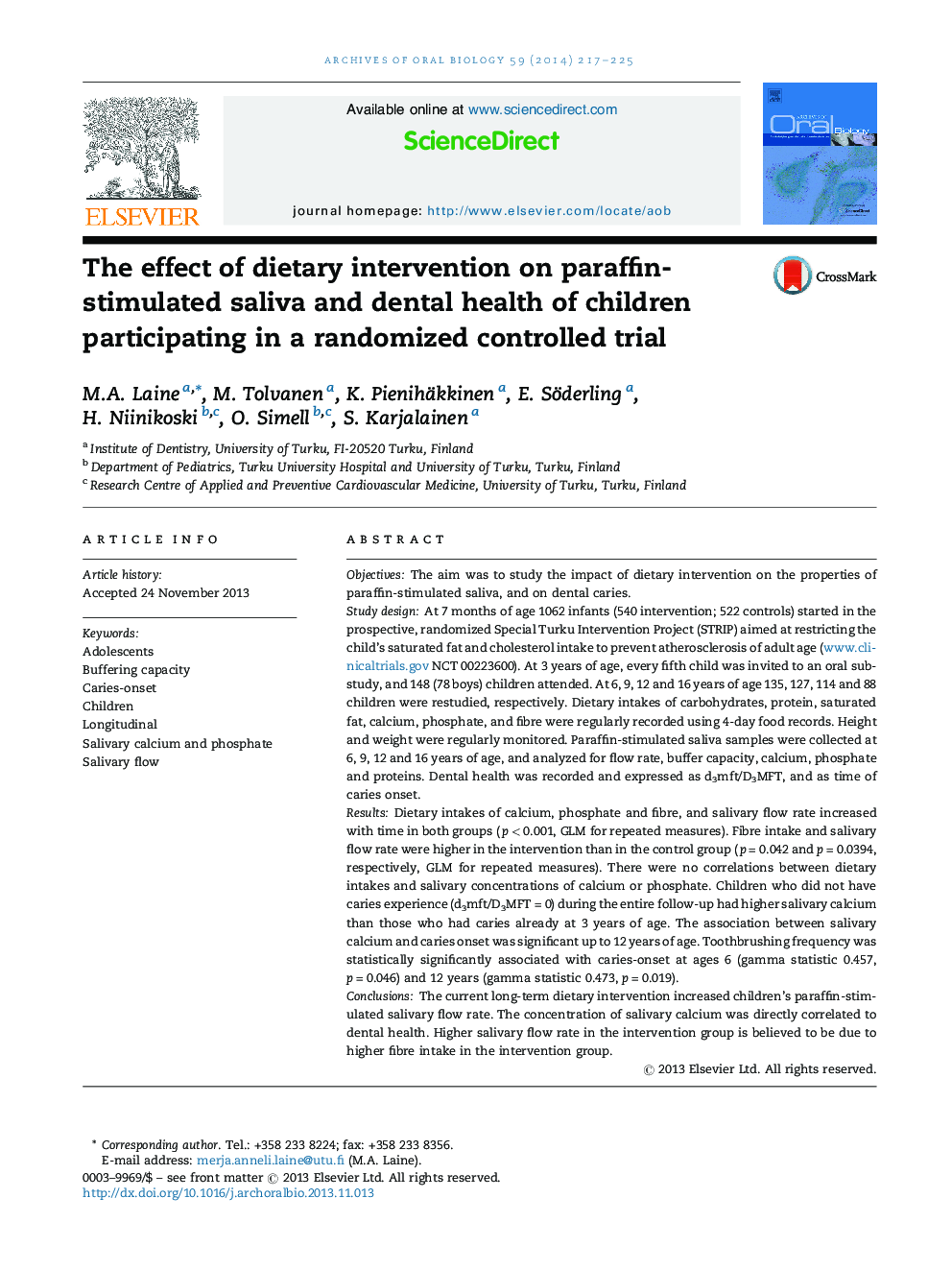| کد مقاله | کد نشریه | سال انتشار | مقاله انگلیسی | نسخه تمام متن |
|---|---|---|---|---|
| 3120995 | 1583315 | 2014 | 9 صفحه PDF | دانلود رایگان |
ObjectivesThe aim was to study the impact of dietary intervention on the properties of paraffin-stimulated saliva, and on dental caries.Study designAt 7 months of age 1062 infants (540 intervention; 522 controls) started in the prospective, randomized Special Turku Intervention Project (STRIP) aimed at restricting the child's saturated fat and cholesterol intake to prevent atherosclerosis of adult age (www.clinicaltrials.gov NCT 00223600). At 3 years of age, every fifth child was invited to an oral sub-study, and 148 (78 boys) children attended. At 6, 9, 12 and 16 years of age 135, 127, 114 and 88 children were restudied, respectively. Dietary intakes of carbohydrates, protein, saturated fat, calcium, phosphate, and fibre were regularly recorded using 4-day food records. Height and weight were regularly monitored. Paraffin-stimulated saliva samples were collected at 6, 9, 12 and 16 years of age, and analyzed for flow rate, buffer capacity, calcium, phosphate and proteins. Dental health was recorded and expressed as d3mft/D3MFT, and as time of caries onset.ResultsDietary intakes of calcium, phosphate and fibre, and salivary flow rate increased with time in both groups (p < 0.001, GLM for repeated measures). Fibre intake and salivary flow rate were higher in the intervention than in the control group (p = 0.042 and p = 0.0394, respectively, GLM for repeated measures). There were no correlations between dietary intakes and salivary concentrations of calcium or phosphate. Children who did not have caries experience (d3mft/D3MFT = 0) during the entire follow-up had higher salivary calcium than those who had caries already at 3 years of age. The association between salivary calcium and caries onset was significant up to 12 years of age. Toothbrushing frequency was statistically significantly associated with caries-onset at ages 6 (gamma statistic 0.457, p = 0.046) and 12 years (gamma statistic 0.473, p = 0.019).ConclusionsThe current long-term dietary intervention increased children's paraffin-stimulated salivary flow rate. The concentration of salivary calcium was directly correlated to dental health. Higher salivary flow rate in the intervention group is believed to be due to higher fibre intake in the intervention group.
Journal: Archives of Oral Biology - Volume 59, Issue 2, February 2014, Pages 217–225
